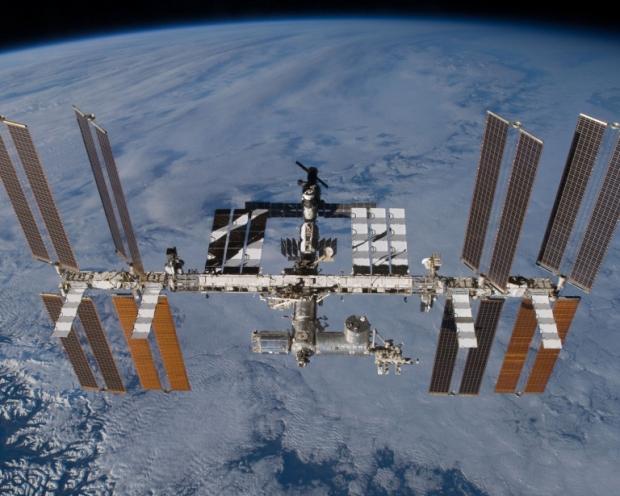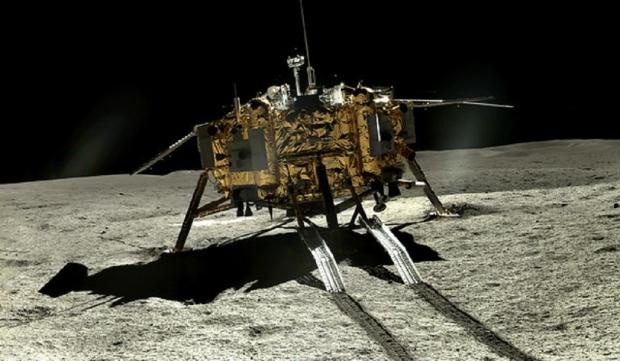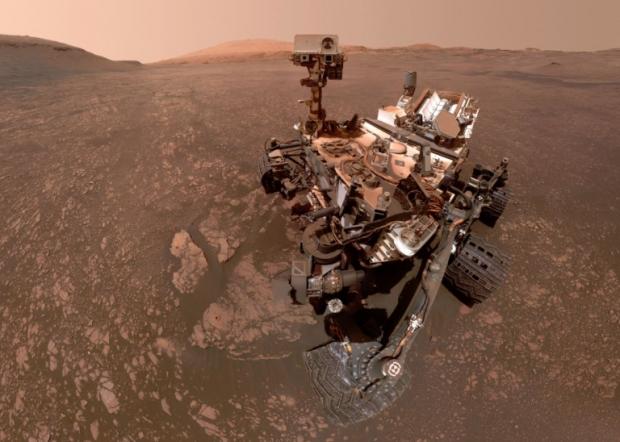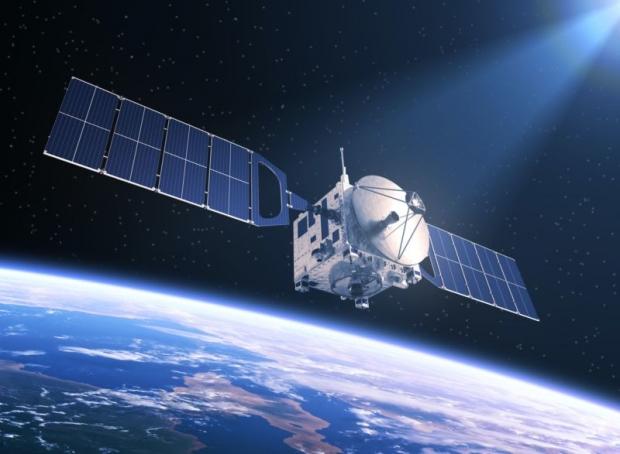Science, Space, Health & Robotics News - Page 370
ISS astronauts fix $2 billion dark matter detection instrument
The International Space Station is a floating mechanical laboratory, and with almost everything mechanical, sometimes things fall apart. It's just the way things are.
Since things sometimes fall apart, they need to be fixed by humans so they can then be used again. This is exactly what happened on the ISS, as astronauts Andrew Morgan and Luca Parmitano were given the job of going on a spacewalk to fix the coolant pumps on the Alpha Magnetic Spectrometer. The cosmic ray detection instrument was out of commission due to the cooling system failing, but since this past Saturday's spacewalk, the instrument might just be ready for use.
After the initial spacewalk, both astronauts decided to double-check the coolant system to make sure their work was 100%. To their surprise, there was actually a leak found in the cooling system, and after discovering this, the leak was repaired. The Alpha Magnetic Spectrometer is valued at around $2 billion dollars and is designed to shine some light on what dark matter actually is and how it works. NASA believes that since the repairs have been successful that the Alpha Magnetic Spectrometer should work until the end of the ISS's lifespan.
Continue reading: ISS astronauts fix $2 billion dark matter detection instrument (full post)
China's Chang'e-4 mission releases new high-res images Moon's surface
China's Chang'e-4 lunar mission rover has relayed some brand new images of the dark side of the Moon. These images are also high-resolution for viewers' pleasure.
China's Chang'e-4 lunar mission recently completed its first year on the lunar surface, and also earned the achievement of being the first rover to travel the longest distance on the dark side of the Moon. China's lunar rover is called Yutu 2, and it recently relayed a new data set back to officials on the ground. Within this data set was a bunch of new high-resolution images that let us take a great look at the surface of the dark side of the Moon.
The date was released online by the Ground Research and Application System (GRAS) on Monday, January 20th. Some of the locations the rover managed to take pictures of including the Von Karman Crater, which is the same spot the rover soft landed on last year. Doug Ellison, who is the engineering camera team lead for NASA's Curiosity rover mission on Mars, tweeted about the data drop, saying, "Oh my god - the data drop is incredible :O". Ellison created galley of the images, that can be found here.
Continue reading: China's Chang'e-4 mission releases new high-res images Moon's surface (full post)
US Space Force logo revealed, seems inspired by Star Trek
President Trump has just unveiled the logo for the Six Branch of the US military, with the new United State Space Force logo unveiled below -- and it seems it has had some serious influence from Star Trek, and that's OK with me.
Trump tweeted out "After consultation with our Great Military Leaders, designers, and others, I am pleased to present the new logo for the United States Space Force, the Sixth Branch of our Magnificent Military!" It has been a promise from Trump since 2018 and now we have the US Space Force created and its new logo finally unveiled.
Here's the new US Space Force logo next to the Starfleet logo from Star Trek.
Continue reading: US Space Force logo revealed, seems inspired by Star Trek (full post)
NASA's Mars Curiosity rover 'forgot' its location and now won't move
NASA has encountered a slight problem with their Mars rover called Curiosity. The problem isn't a very good one either because Curiosity is refusing to move.
NASA has released a new report that reveals that Curiosity has temporarily stopped moving. So why did this happen? Curiosity is equipped with a series of safety regulations that have been implemented into the rover to ensure its safety when traversing the dangerous landscape of Mars. Curiosity measures the surroundings relative to its body before making a move, and some of these measurements are the current altitude, surrounding rock formation, slope steepness, etc.
Before any movement is made by Curiosity, all of these measurements have to be evaluated and deemed 'safe'. If one of these safety checks are calculated to be 'not safe' then Curiosity won't turn on its motor and remain still, which is exactly what the rover has just done. In the report, NASA says that "Curiosity lost its orientation" because "Some knowledge of its attitude was not quite right, so it couldn't make the essential safety evaluation". Curiosity relayed this information back to NASA, and NASA began forming a plan to inform Curiosity of its surroundings correctly.
Continue reading: NASA's Mars Curiosity rover 'forgot' its location and now won't move (full post)
DirecTV wants to de-orbit their broken satellite before it goes boom
DirecTV is now racing to remove a satellite from Earth's orbit because if the company waits too long the satellite could explode and turn into dangerous space junk.
In a report from Space News, DirecTV has asked the Federal Communications Commission (FCC) for a temporary rules waiver so the company can bring down the Spaceway-1 satellite. In the FCC filing from DirecTV, the company explains why the spacecraft needs to be taken down immediately, here's a snippet of what was said; "In December, Spaceway-1 suffered a major anomaly that resulted in significant and irreversible thermal damage to its batteries.
The report continued, "Boeing, the spacecraft manufacturer, concluded based on all available data that the batteries' cells cannot be guaranteed to withstand the pressures needed to support safe operation of the spacecraft in eclipse operations; rather, there is a significant risk that these battery cells could burst. The risk of a catastrophic battery failure makes it urgent that Spaceway-1 be fully de-orbited and decommissioned prior to the February 25th start of eclipse season."
Continue reading: DirecTV wants to de-orbit their broken satellite before it goes boom (full post)
Scientists slap down claim that snakes caused the Wuhan virus outbreak
The Wuhan virus that is currently sweeping the news has been subjected to a bit of controversy surrounding the topic of what animals caused this virus to spread to humans.
The virus, which is called 2019-nCoV, is a coronavirus, and just yesterday, I reported on a research paper that claimed that the virus' most likely origin was snakes. Now, other scientists have said that the research team has no proof to make the claim that the virus' origin comes from snakes; instead, it should only be able to infect mammals and birds. David Robertson, a virologist at the University of Glasgow, UK, says, "Nothing supports snakes being involved".
Paulo Eduardo Brandao, a virologist at the University of Sao Paulo is currently investigating whether snakes can contract coronavirus says, "They have no evidence snakes can be infected by this new coronavirus and serve as a host for it. There's no consistent evidence of coronaviruses in hosts other than mammals and Aves (birds)." It seems that there is a lot of confusion towards what animal has caused this outbreak, and at the moment, no one really knows which animal it is. Only time will tell. For more information on this topic, check out this article from Nature here.
Continue reading: Scientists slap down claim that snakes caused the Wuhan virus outbreak (full post)
Google assisted in this extremely high-resolution map of brain neurons
Google has helped out Janelia Research Campus with its recently released breakthrough in being able to map the brain.
Above is now the largest and most highest-resolution map of brain connectivity we as humans. The video was published on the Janelia website, and showcases a 3D model of 25,000 fruit fly neurons on a range of different cellular structures in various parts of its brain. So how was this done? The research team sliced the fruit fly's brain into extremely thin pieces and imaged those slices using electron streams from an electron microscope.
The team then stitched the image back together and created a brain map of the fruit fly. While this achievement might sound minuscule because the map is of a fruit fly and not a human - the achievement still harbors high levels of recognition as this is still a large step towards understanding the brain. Scientists can now trace individual neurons back to their source of functionality. It should be noted that a fruit fly has 100,000 neurons in its entire brain, while 25,000 is still small when compared to the total, it's still a big step forward.
Continue reading: Google assisted in this extremely high-resolution map of brain neurons (full post)
Scientists think snakes are 'most probable' suspect for Wuhan virus
China is currently under threat by a never-before-seen coronavirus, and as the virus is spreading around the globe, researchers think they have figured out what animal it has come from.
The virus, which is currently spreading in China, is called 2019-nCoV, and its a coronavirus. The virus broke out in the Chinese city of Wuhan at the South China Seafood Wholesale Market. Researchers were quick to understand that the virus came from animals and then was being transferred 'human-to-human'. What they didn't know until now was what animal it came from.
In a new study published in the Journal of Medical Virology, researchers conducted a detailed genetic analysis of the virus and compared it to other known viruses, their origins, and their host species. What was concluded is that 2019-nCoV is a combination of coronavirus found in bats and another coronavirus of unknown origin. The researchers also found that the virus was most likely found in snakes before it made contact with humans.
Continue reading: Scientists think snakes are 'most probable' suspect for Wuhan virus (full post)
The International Space Station is launching into the LEGO universe
If you are a science lover and enjoy the likes of space and conducting experiments, then you'd probably know what the floating laboratory is.
The floating laboratory is, of course, the International Space Station (ISS), and while most people might not be able to visit it in person, you can definitely build your own version at home. Your own version won't be life-sized (sorry to crush your dreams), but it will be extremely cool and something to show off to your friends.
Beginning on February 1st, LEGO will be releasing its own model of the ISS, and its absolutely packed to the brim with details that are present in the real-life version. Here's LEGO's official announcement, "Build and display this spectacular LEGO Ideas International Space Station (ISS). Packed with authentic ISS details, including a posable Canadarm2 and two rotating joints that coincide with eight adjustable 'solar panels,' this 864-piece set is a wonderful gift idea for space enthusiasts, adult LEGO fans or any experienced builder."
Continue reading: The International Space Station is launching into the LEGO universe (full post)
Scientists build a Spider-Man-like robot that sucks its way up walls
If you know who Spider-Man is, then you have probably thought about how cool it would be to scale buildings like the web-head. Researchers thought about the same thing and decided to create the first robot that can do exactly that.
Researchers Xin Li and Kaige Shi from Zhejiang University in China have created a wall-climbing robot using a specially designed vacuum suction unit. Until now, climbing surfaces using suction required the surface to be unbroken, such as glass or marble. This was a requirement because the vacuum would leak through the gaps in the texture of the surface, leading to a complete loss of suction.
Scientists have solved this problem by implementing a high-speed rotating water ring that coats the space between the surface and the suction cup. This film of rotating water allows for the vacuum's suction to be unbroken, which means that suction levels are kept at an optimal rate for climbing. Li said, "There are many applications of our design, but we think the wall-climbing robot will be the most useful. Compared to other wall-climbing robots, the robot with our ZPD-based suction unit achieves surprising improvement in performance."
Continue reading: Scientists build a Spider-Man-like robot that sucks its way up walls (full post)











